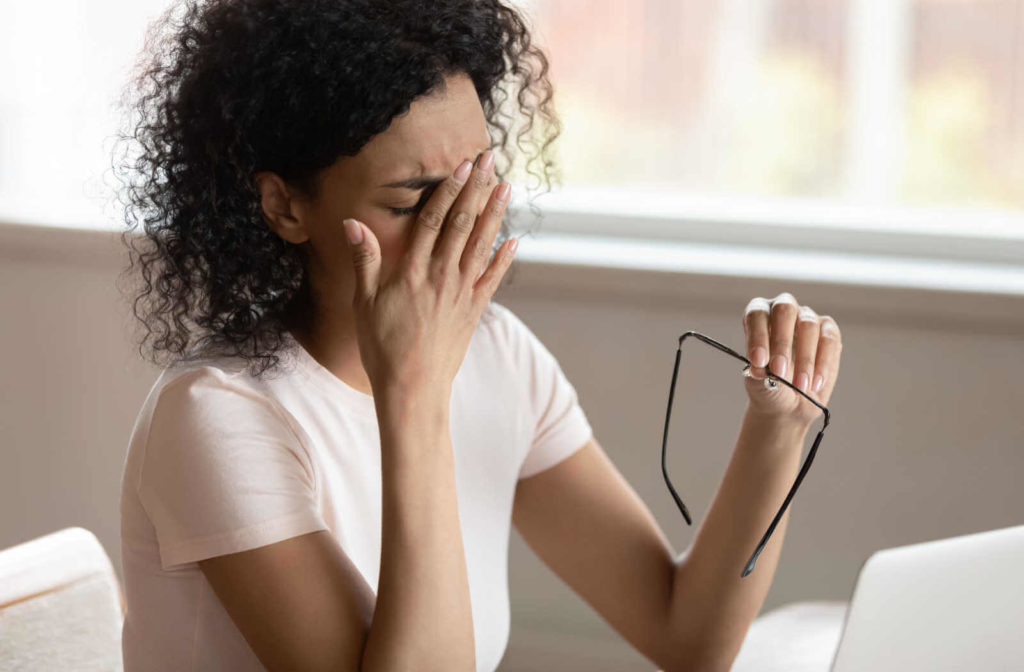Myopia, also known as nearsightedness, is one of the most common vision disorders in children. Approximately 40% of Americans have myopia, with the trend on the rise. Projections suggest as much as 50% of the world population will have myopia by 2050!
Children as young as 3 can begin developing myopia, and without a treatment plan, it can progressively get worse as you age. This means it’s important for children to have eye exams as early detection can help with the management of symptoms.
Myopia can get worse, but there are ways to help manage its progression.
What is Myopia?
The eye is delicate and powerful at the same time. All its pieces work together to construct what you see.
Myopia is a refractive error. When light enters the eye, it passes through the cornea (the clear dome at the front of your eye) and the lens. These parts bend, or refract, the light towards the layer of light-sensitive cells at the back of your eye known as the retina. Next, the optic nerve sends the data to your brain and there you have an image.
But for someone who is nearsighted, there’s a disruption in the process. Normally, the eye has grown too long and become oval-shaped rather than round. This causes light rays to converge in front of the retina, rather than on it, and the rays cross over each other. In the end, faraway objects will look blurry, while closer objects remain clear.

Symptoms
Myopia typically comes on slowly, developing through childhood and adolescence. Since eyes continue to grow through these stages of life, it typically stabilizes around the age of 20. Occasionally, due to injury or other health conditions, myopia can develop in adults.
The signs or symptoms of nearsightedness may include:
- Distant objects appearing blurry or fuzzy
- Headaches
- Eyestrain
- Persistent squinting
For children this could be especially severe as they may have trouble focusing in school.
High Myopia
In rare cases, myopia can progress to a condition severe enough to be considered high myopia. This is generally defined as nearsightedness with a prescription of -6.00 or greater. In these cases, not only is blurry vision a concern but so are serious eye conditions such as:
- Retinal detachment
- Glaucoma
- Cataracts
As with myopia, high myopia is most prevalent in kids, which is why it’s important to have regular eye exams to catch this issue before it progresses.
Causes of Myopia
Children are always growing, and their eyes grow with them—they change with each stage of life. Why an eye might grow longer than it should is a complex question, and can be the result of several factors.
It Could Be Hereditary
Genetics play a large role in the development of our bodies. Children who have nearsighted parents have a higher chance of developing myopia. Though it is still possible if neither parent has myopia for the child to develop it.
It Could Be Environmental
Spending too much time doing close-up activities, staring at screens for a long period, and not spending enough time outside can all contribute to the likelihood of developing nearsightedness. If a child is already predisposed to myopia, such as when one or both of their parents have it, the risk can be even greater.
Treating Myopia
Though there is currently no cure for myopia, early detection can ensure it is managed properly and kept from getting worse as you age. There are several options when it comes to myopia control, including:
- Ortho-K: Also known as orthokeratology or corneal reshaping, this is the process of wearing contact lenses while you sleep that gently reshapes the curvature of your cornea long enough to see for your daily activities.
- Multifocal Contact Lenses: These soft contact lenses that, in addition to helping the wearer see clearly, can help slow myopia progression.
- Atropine Drops: Studies have shown these prescription drops to be effective in slowing the progression of myopia.
Since everyone’s eyes are unique, your plan for myopia control will be unique too. If you have any questions about treatment plans for nearsightedness for you or your child, contact your eye doctor for options.
How Can You Prevent Myopia From Getting Worse?
Since myopia is partially environmental, there are things you can do to help care for your and your child’s vision. These include:
- Limiting time on digital devices
- Taking occasional screen breaks to focus on something in the distance
- Avoiding reading or working in dim light
- Going outside
- Avoiding prolonged close-up activities
- Scheduling regular eye exams
The Importance of Myopia Control
You can’t reverse myopia, but you can help prevent it from getting worse with age. Regular eye exams are a key part of catching the issue early. If you or your child are having trouble focusing on distant objects, or if you have a family history of nearsightedness, booking an eye exam is one of the best ways to catch these early signs.
Our team at Eye Care Center of Colorado Springs is knowledgeable and experienced in helping patients through myopia. Book an appointment today. We’re proud to help you find the best way to manage your symptoms.


